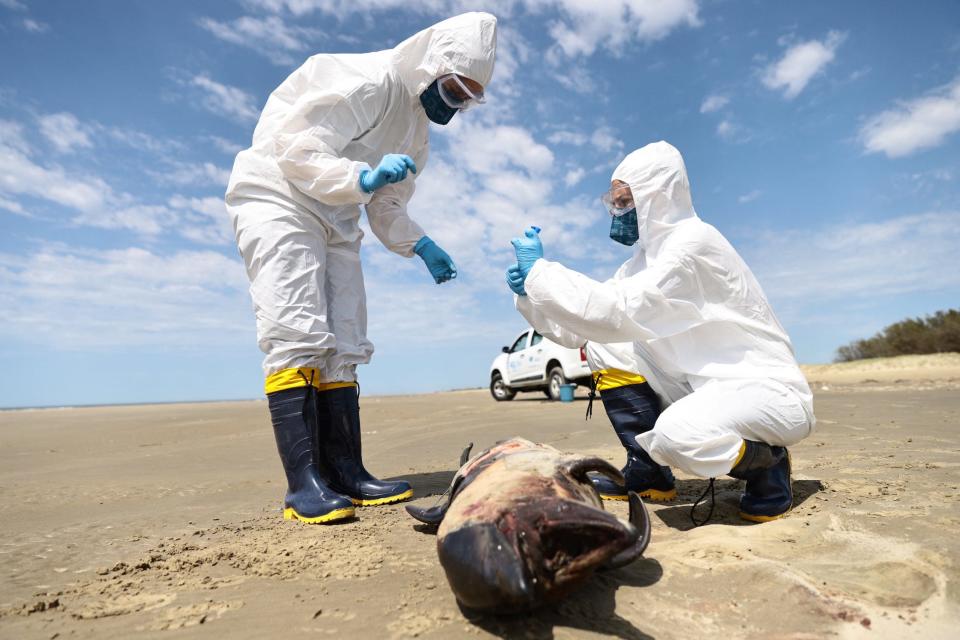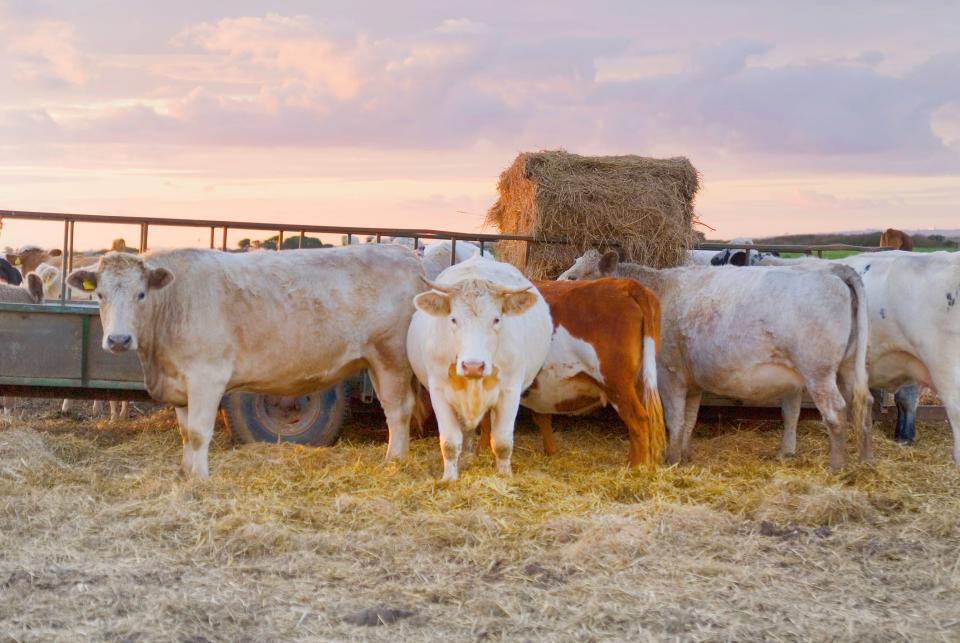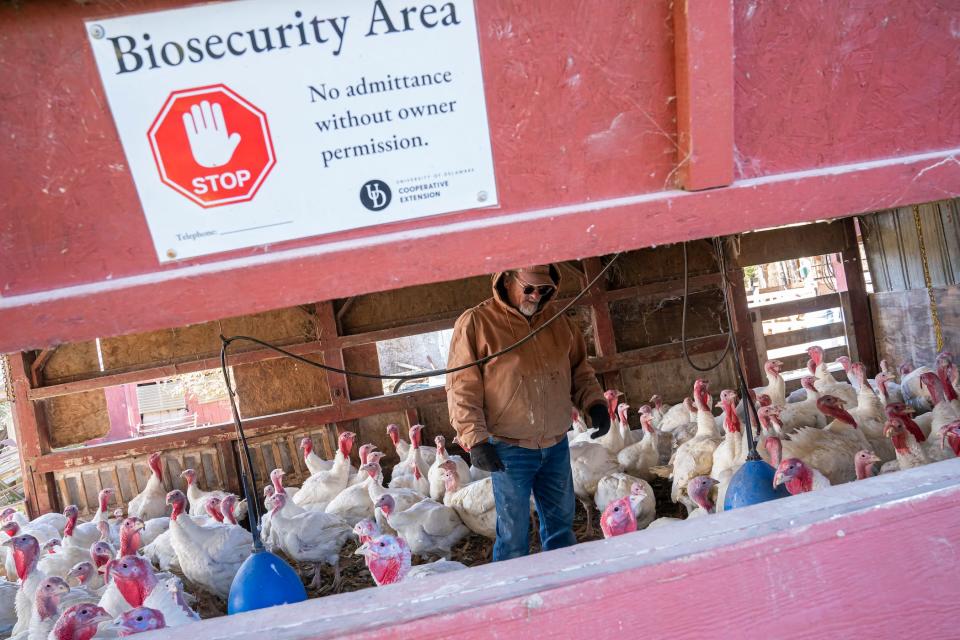The 3rd human case of bird flu in the US has 2 new and troubling symptoms
The H5N1 bird-flu virus has infected a third person in the US, this time with respiratory symptoms.
The new patient's cough and sore throat could help the virus get better at infecting humans.
Scientists fear the US is missing critical opportunities to check the virus's genome for new mutations.
The H5N1 bird-flu virus has once again infected a human. But this time, the unlucky patient had a cough and a sore throat, which is a new milestone for the virus's spread in the US.
The H5N1 virus has become a pandemic among animals, raging through worldwide bird populations and now through US cattle herds.
This latest human case, which the US Centers for Disease Control and Prevention confirmed on Thursday, is the third known human case in the US, following one in Texas and another in Michigan.
All three people are dairy-farm workers who were exposed to infected cows, according to the CDC.
The first two cases, however, involved only eye symptoms, including conjunctivitis or pink eye. That means the infection was probably limited to their eyes. Now, it has hit someone's lungs.
The risk to the general public is still low, the CDC says, but these new symptoms suggest the virus may have entered a new phase of its flirtation with human infection.
Lungs give the virus more opportunity to adapt to humans
The St. Jude virologist Richard Webby is a leading researcher on an H5 group of influenza viruses, which have been circulating in bird populations for about 25 years.
Since 2021, the H5N1 virus has branched out to new frontiers of sustained spread, infecting dolphins and porpoises, migrating to the Americas, culling sea lions and seals, and now spreading through US cattle herds.

"This virus keeps on turning up surprises," Webby, who directs the World Health Organization Collaborating Centre for Studies on the Ecology of Influenza in Animals and Birds, told Business Insider. "Had you asked me, beginning of the year, what the chances are of H5 turning up in cows, I would have said exceedingly low."
Still, he said, H5N1 is still more of a bird virus than a mammalian virus. That's mainly because of the receptors it binds to in order to enter its hosts' cells and replicate itself.
"Avian viruses bind to one form of this receptor on the host cell. Mammalian viruses bind to a different form," Webby said.
The mucus lining the human eye (where the first farmworker got conjunctivitis) is rich in the receptors that avian viruses grab, he said. There, the H5N1 virus can continue operating as an avian virus, grabbing avian receptors with no need to adapt to human receptors.
But our respiratory tracts are full of both forms of this receptor — the form preferred by avian viruses and the one preferred by mammalian viruses. Therefore, being in the lungs gives H5N1 more exposure to the receptors that mammalian viruses use, Webby said.
That gives H5N1 more opportunity to sustain a mutation that would allow it to bind to those mammalian receptors, adapting better to human bodies.
That's the concern, but it's not clear whether that has actually happened inside this patient's lungs. For such a mutation to be significant, it would then have to spread to other people as well. So far, based on all known cases, the virus has been unable to spread from one person to another.
Sequencing the virus tests for mutations
In a New York Times opinion piece on Sunday, the virologist Rick Bright argued that the emergence of respiratory symptoms indicated "a dangerous inflection point" for the virus.
After all, he wrote, "coughing can spread viruses more easily than eye irritation can."

But for Webby, the Michigan patient's cough "doesn't change a whole lot."
Two previous one-off human cases of H5N1 — one in Chile and one in Ecuador — featured respiratory symptoms.
The virus didn't necessarily have to mutate to infect the Michigan farmworker's respiratory system, Webby said. The person could have simply encountered a large amount of virus, maybe an especially ill cow.
"That's me sort of looking at the crystal ball a little," he said, adding that it was "the most likely explanation for what we're seeing, rather than the other one, which is of course much more scary, that this virus has already changed."
Either way, scientists won't know if any scary mutations have occurred until they can examine the virus's genomic RNA sequence from this new case. But Webby said the patient carried such small amounts of the virus that it was possible the CDC wouldn't have enough to get the sequence.
Genome sequences are critical. By checking the virus's genes in each new human case, no matter how mild the symptoms, scientists can identify any fresh mutations that help it adapt to humans. If H5N1 becomes a bona fide mammalian virus, they could watch its transformation in real time.

"The very first signals we're going to get that this virus is changing are probably going to come from human infections," Webby said.
So far, though, the government's monitoring may not be robust enough to spot those mutations early.
Scientists call for more testing so they won't miss mutations
The Food and Drug Administration has detected fragments of the virus in commercial milk and beef. Public-health experts have told BI that though it's unlikely food will infect you, cautious people can cook their eggs and meats all the way. They said nobody should drink unpasteurized milk, aka raw milk.

The real risk is to people who work directly with sick animals, especially farmworkers such as the three who have been infected so far.
The CDC's principal deputy director, Nirav Shah, told the press in a briefing on Thursday that the government was monitoring about 350 people nationwide who might have been exposed to H5N1, most of them in Michigan. But The New York Times reported that only about 40 farmworkers had been tested for the virus.
"We would like to be doing more testing," Shah said, according to STAT News.
Bright argues that the government's weak testing regime could be allowing farmworker infections to fly under the radar.

But undetected cases aren't the same thing as undetected spread.
Bright's essay rings alarm bells about unknown human-to-human transmission, but Webby finds that unlikely. Even with its current monitoring, the CDC would probably detect sustained human spread, he said.
Rather, the problem with undetected cases is that nobody can sequence their samples. Those are windows into the virus's genome (and possible mutations) that nobody is peeking through.
Webby and Bright agree that scientists need more sequences of the virus more quickly. For example, Bright said that despite the ongoing herd spread, the Department of Agriculture hadn't shared a new sequence from a cow infection sample in weeks.
"Bottom line is we need to have more information from exactly what this virus is doing," Webby said. "The more we can understand about it, I do believe we can properly control it, or at least control it way better than we are."
Correction — June 4, 2024: An earlier version of this story misstated the nature of genomic sequencing of the H5N1 virus. They are RNA sequences, not DNA.
Read the original article on Business Insider

 Yahoo News
Yahoo News 
